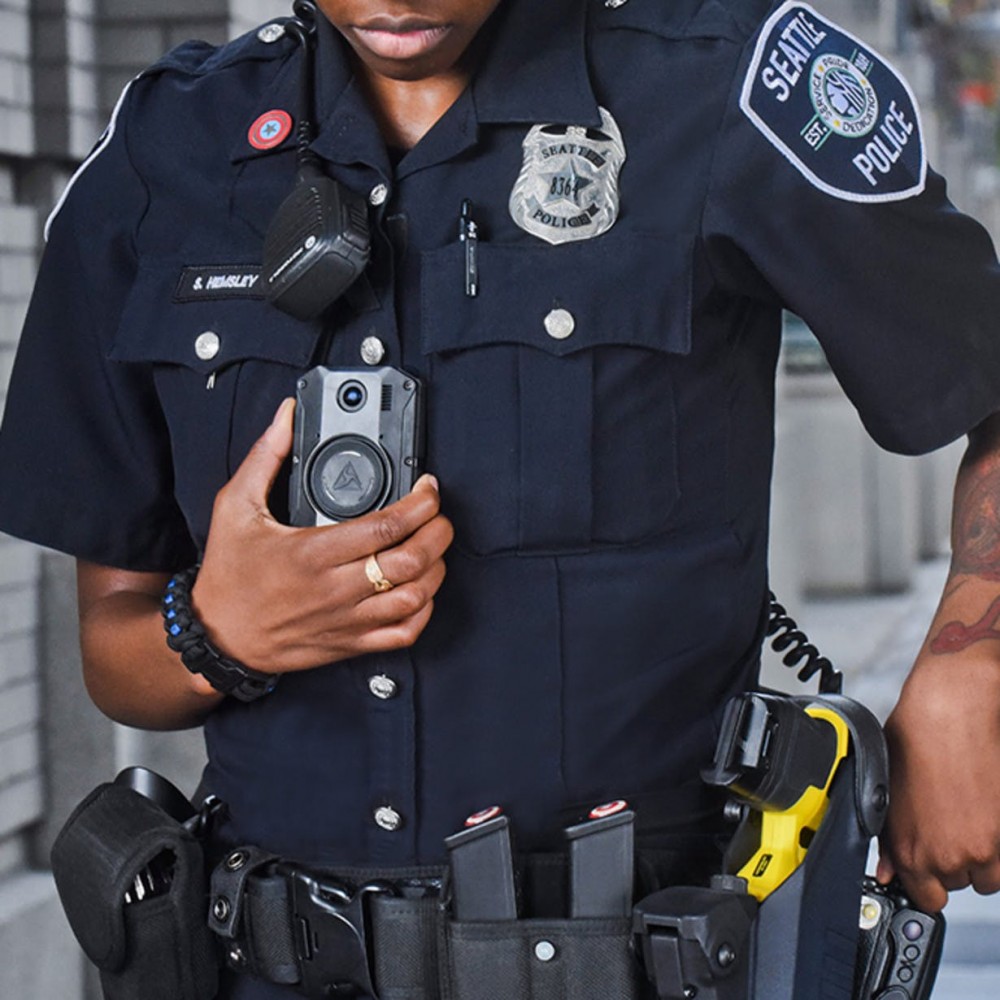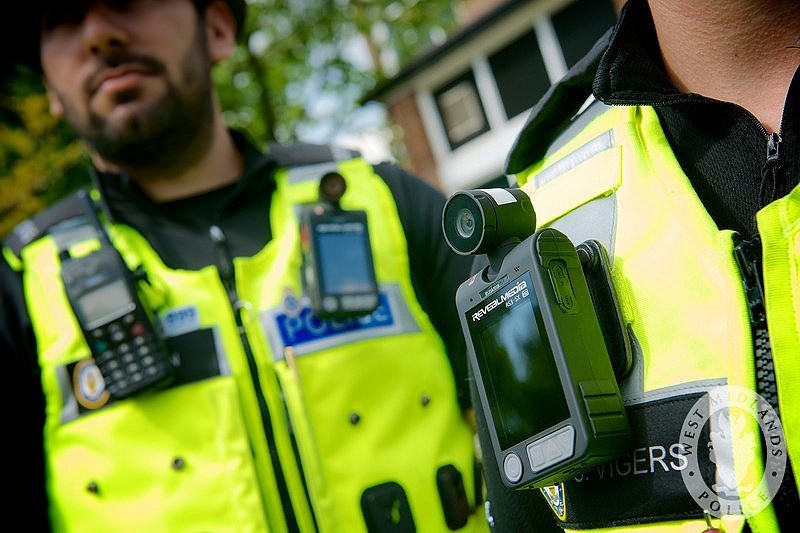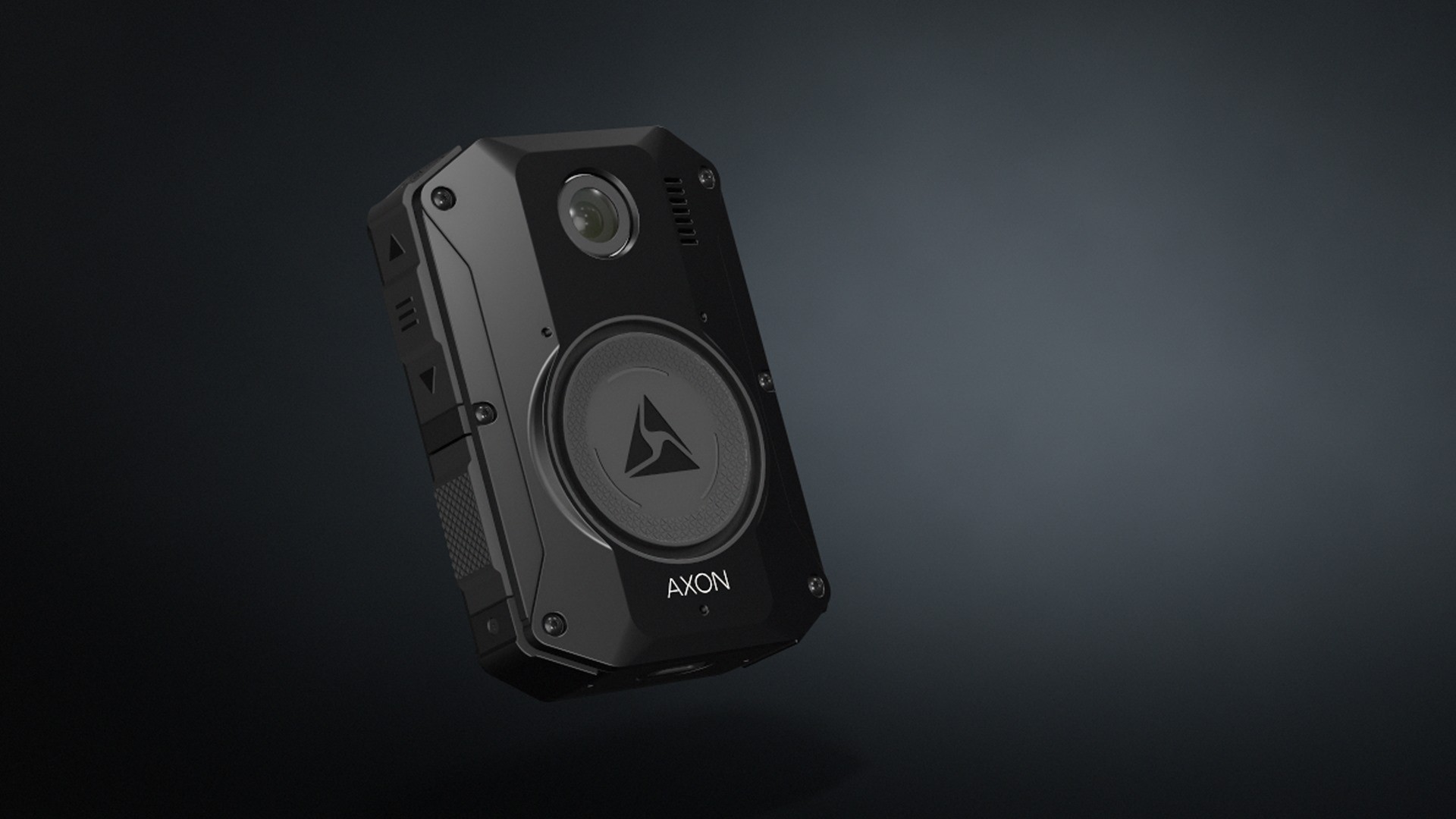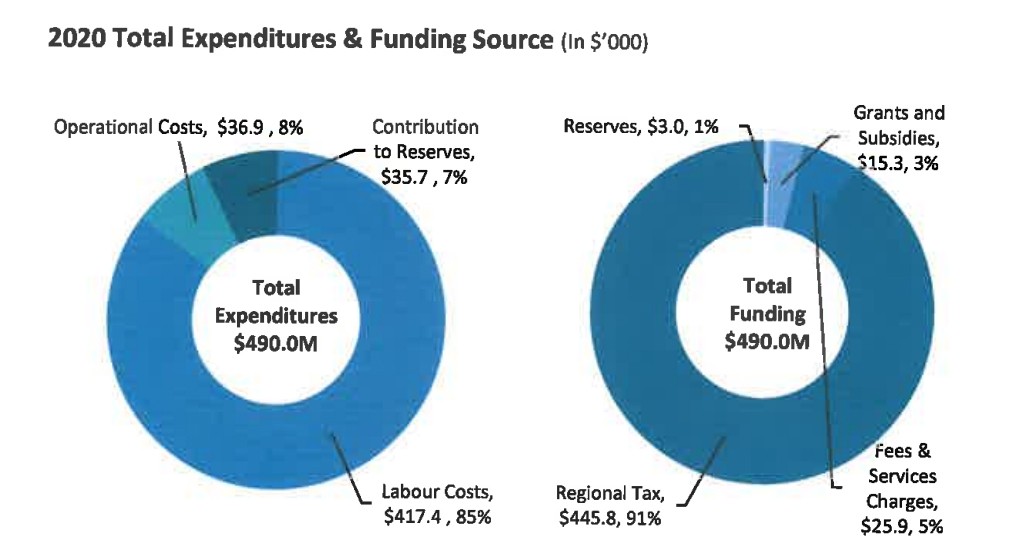
While forces across the country proceed carefully, Peel Police rushes ahead with accelerated plan for body-worn cameras
Peel’s police force is trying to make it look easy.
A suggestion from local mayors, a motion at the police services board, and the project to equip about 2,000 officers with body-worn cameras — at a cost of nearly $2 million annually — is officially underway. Officers will start wearing the devices as early as next year.
PRP says this “accelerated” project is necessary as a result of the societal unrest and calls for police reform that have erupted in the wake of George Floyd’s death in May, noting in an August 21 report “local geopolitical and global events (are) calling for increased police accountability.”
The rapid escalation to operationalize the controversial policy is in line with Chief Nishan Duraiappah’s mantra of change, which he has spoken of since stepping into the role late in 2019.
“If we can’t keep up with change we will be left behind,” the Chief told The Pointer in August of last year.
In the two cities the force patrols, change, for many in the diverse populations that dominate Mississauga’s and Brampton’s rapidly shifted demographics, can’t come soon enough.

Peel Regional Police Chief Nishan Duraiappah
The problem: will cameras on officers turn around a force that has been plagued by allegations of systemic discrimination and widespread misconduct, or will it just paper over the root causes that might get ignored?
The approval of the project with limited analysis ahead of time, and no pilot phase, is a stark departure from the common practice in other police jurisdictions in Ontario and the country.
Last month the Toronto Police Service rolled out its own body-worn camera project, with plans to equip all frontline officers with the devices by the end of 2021, at a cost of $34 million over 5 years. The approval follows a lengthy pilot project that started in 2014.
The Durham Regional Police studied the feasibility of using body-worn cameras by testing the technology on a small group of officers over a one-year period in 2018, with widespread use still to be determined. Calgary Police, previously the only service in Canada to fully implement the technology, first attempted to do so in 2016, but was met with challenges. The project was relaunched in the summer of last year.
Montreal police studied the potential of the cameras through a one-year pilot project in 2016, but didn’t move forward with service-wide implementation when the test concluded.
Many other large Canadian Police forces including Vancouver and Halifax have studied the potential of implementing the technology — which is used by nearly half the police forces in the United States — but ultimately decided against it, concluding the potential benefits did not override the costs and sticky privacy and implementation questions.
“It is very difficult to strike a balance between the privacy concerns that accompany police body-worn cameras and their alleged capacity to increase police accountability and transparency,” wrote defence lawyer Thomas Bud in a 2016 article published by the journal Surveillance and Society.

Almost half of the police forces in the United States now use some form of body-worn camera.
This is not lost on Peel Police, with a recent report noting that while many police forces have studied the potential of body-worn cameras, “due to the high costs associated with this technology, as well as a number of unknowns around data privacy, most were not extended to service wide implementation.”
To solve some of the potential privacy issues that come with the cameras — including the potential use of the footage to identify people after the fact, a particularly poignant concern that has arisen in the wake of widespread Black Lives Matter demonstrations across the world, as well as the potential for victims of domestic violence or sexual assault to be recorded in vulnerable conditions — it was recommended by consultant Price Waterhouse Coopers in a recent service delivery review that PRP enlist Ontario’s Information and Privacy Commissioner to conduct a “privacy impact assessment” before moving ahead with the project. The same service delivery review labelled the implementation complexity for the BWC project as “high”.
When The Pointer contacted the IPC for comment on any future work with Peel Police for its BWC project, a spokesperson said the agency does not conduct such assessments, but encouraged PRP to do one of their own for the “high-risk” BWC initiative.
“Our office does not conduct privacy impact assessments (PIAs). Institutions should conduct their own PIAs in order to identify and reduce potential privacy risks when considering new technologies and programs,” the IPC told The Pointer in an emailed response, linking to the organization’s Planning for Success: Privacy Impact Assessment Guide document.
“Institutions may provide us with their (draft) PIA for our review and comment as part of a consultation, and we strongly encourage them to do so when high-risk programs, such as body-worn cameras, are being considered. Our office is certainly willing to work with institutions to help ensure compliance with municipal or provincial privacy laws,” the IPC continued. “We have been in contact with Peel Regional Police. They plan to consult with our office regarding their use of body-worn cameras and we are prepared to work with them, as we are with other police services.”
Privacy is only one of the many challenges facing the force as the organization pushes quickly toward the attaching of cameras to the chests of its officers.
Peel Police state the cameras are necessary in order to build trust with the community and improve safety for both members of the public and officers.
“The Peel Regional Police believe this technology would be mutually beneficial to both the community and the police,” a recent report states, adding that “significant and purposeful” consultations with Peel’s diverse communities “will help guide the acceleration of this impactful technology to ensure that the implementation will be fulsome, community oriented, evidence based and fiscally responsible.”
Despite implementation being fast-tracked — Deputy Chief Anthony Odoardi told members of the Peel Police Services Board in August they are moving forward in “expedient time and expedient fashion” — few details on these consultations have been made public. Peel Police were unable to confirm any dates or formats for the consultations, only saying they will most likely take place online.
“Peel Regional Police are committed to working with our community during the planning phase of the Body Worn Camera project. With the current pandemic, and prioritizing safety first, we will plan to interact virtually,” a PRP spokesperson said in an emailed response.
Many community members have already made their voices heard, with nearly 100 residents writing letters to the Police Services Board, which governs the force, ahead of the project’s approval, calling it nothing more than a Band Aid solution to fixing the complex issues of anti-Black racism and other forms of systemic discrimination that exist within police forces across the country.
Many more practical issues will have to be addressed as well, including data storage, synchronization with existing policy and evidence sharing practices, as well as drafting a policy to manage the use of the cameras: when and where they are turned off and on, how video is redacted to protect the privacy of the officer and citizens and how the evidence is stored and accessed long-term. These similar issues are faced by all police forces looking to implement body-worn cameras, but they are particularly troublesome for Peel’s force, which wants to steamroll ahead with their plan as fast as possible.
Typically, organizations choose to implement complex projects through temporary pilot initiatives in order to test the technology, its feasibility with existing processes, and work out any wrinkles that could arise with widespread implementation. Peel has skipped this step.
In the case of the Toronto Police, whose body-worn camera project was approved last month following a lengthy pilot phase, a proposed set of policy guidelines governing the use of the cameras was sent to the IPC for review in July, weeks ahead of the project’s eventual approval. While Peel police has confirmed it will be working with the IPC before implementing the project, any potential mind-changing recommendations made by the IPC on future policies carry less weight as the project is already approved.
For the intricate technical implementation of the project, Peel Police is working with Axon, the same company that will be supplying the cameras, to implement a new Digital Evidence Management System (DEMS), which the force says will create a more “efficient and effective way” to manage varying types of evidence (photos, videos, and other electronic files) and send these from frontline officers into the court system and Crown Attorney’s Office in a more “streamlined and responsible way”.

The newest version of Axon's body-worn camera.
Currently, Peel officers are working with “antiquated” systems, and a recent report states the new DEMS will save on operating costs as the new system will offer cheaper data storage options.
According to estimates from a California police department in 2015, equipping 200 officers with body-worn cameras, could potentially generate 33 terabytes of data every year. One terabyte equals a thousand gigabytes. It would take 1,500 CD-Rom disks to store one terabyte of information. One CD-Rom can store about 1,500 medium-size photos.
This means 200 officers could generate the equivalent data of almost 75 million photos a year. Peel police has about 2,000 uniform officers, so it’s not unreasonable that the force might have to manage the equivalent of 750 million photos a year.
Through a partnership with Axon using its Evidence.com platform, this “tsunami of digital evidence” as PRP describes it, will be stored on a cloud-based system.
This integration will also help the force eliminate existing issues with certain evidence and data being locked in “data silos” and only accessible to all departments within the PRP through a “cumbersome process.”
“The integration of a Digital Evidence Management System will only create further efficiencies and streamline processes to allow for an even greater level of policing services throughout our region,” a PRP spokesperson states.
The DEMs along with the cameras will cost PRP approximately $8.9 million over the course of the five-year contract, an amount Chief Duraiappah says is “well within” the police service’s existing budget and will be “completely absorbed” over the next five years.
While the $8.9 million accounts for the technology and partnership with Axon, there are many “soft costs” the force still doesn't know about.
“Further analysis is required to fully understand the financial impact of the proposed solution,” PRP states in its report that was issued before the project was approved, adding that typically all of these costs are not fleshed out until one year after implementation.
The report states that Axon has committed to assessing and reviewing the terms of the contract over the next 12-18 months to “best serve the operations and fiscal needs of the service moving forward.”
This still leaves a number of costs undetermined, including ongoing IT support, a dedicated team of employees to manage and redact the video as it comes in (the Durham Regional Police estimated it would need to hire six additional civilian employees to handle this task, and the force has less than half the number of sworn members than PRP).
Peel Police state some of these costs could be offset by the time officers save by no longer needing to physically copy evidence to DVDs or manage video disclosure for court purposes, at current levels. The report does not provide any numbers, or the existing amount of time spent on these tasks by officers, to support this claim.
The Toronto Police Service estimates the annual additional staffing costs could be close to $1.4 million as well as $1.5 million in additional one-time implementation costs for technological upgrades and professional services not included in the Axon partnership (the Toronto Police also chose Axon as its preferred vendor).

Toronto Police officers with the new body-worn cameras.
Arguably the most critical aspect of any body-worn camera project is that officers are trained in how to use the devices properly, something that is necessary to avoid abuse of the devices and them being turned off when they shouldn’t be.
The force states it is analyzing the potential for using mechanisms “built into the BWC internal system that triggers the device to begin recording”. This includes features linked to the officer’s equipment that automatically have the camera begin recording when the officer accesses their taser or firearm.
“Once activated (turned on) the camera begins buffering (capturing footage in the internal memory) and when an event occurs, the system is able to access a 30 second lead up to the event,” the PRP report states.
Proper use of the device and how to handle the video footage captured in a proper manner will require extensive training. For its one-year pilot project, the DRPS estimated it would be paying the officers involved approximately $400,000 in over-time pay as they learned to use the devices and the nearly two hours it would take to file the video footage after their shifts.
Peel Police do not anticipate having to pay any overtime to officers to train on the devices.
“The training for Body Worn Cameras and the Digital Evidence Management system will be integrated into our current training schedules. Our officers receive training in many different ways and include; in-person, virtually, and on-line. Training for this project will be incorporated so overtime is not required,” PRP states.
The force says the fast-tracked program is necessary as a result of the increased calls for police accountability, however, the effort appears to ignore a key piece of the recent demonstrations, that being the “defund” movement calling for taxpayer dollars to be redirected from police departments into social programs.
The ability for Peel police to absorb the near $10 million into its budget over the next five years is a result of unsustainable increases in the force’s budget over the last decade. The $490 million police budget for 2020 represents a 69 percent increase from the roughly $290 million budget in 2010. If such increases are to continue, it would mean regional council will be approving a budget of more than $828 million for Peel police by 2030.

The rapid approval of the project contradicts calls from the public for other strategies involving more immediate and effective reform, such as the use of mental health experts to deal with individuals that police officers simply are not trained to engage.
While other police services held consultations over the summer to hear from residents about the recent calls for changing the way police are funded — the Toronto Police Service held four straight days of town hall meetings, followed by a report with 81 recommendations — the Peel Police Services Board has provided no indication it will be putting any concerted effort into hearing what the public has to say when it comes to the 2021 police budget.
“As the Board moves forward with the 2021 budget process, the Board will continue to listen and consult community members. The Board welcomes opportunities to strengthen accountability and public trust while ensuring greater community safety and well-being,” stated Robert Serpe, the executive director of the Peel Police Services Board, when asked about specific consultations that are planned.
The Pointer asked whether chair of the board Ron Chatha plans to bring forward any report or recommendations for how to address calls from the public for reforming the police budget, but the question was not addressed.
“The Board and the Chief will continue to collaborate on these measures and will discuss further while preparing the 2021 budget,” Serpe said in an emailed response.
Email: [email protected]
Twitter: @JoeljWittnebel
COVID-19 is impacting all Canadians. At a time when vital public information is needed by everyone, The Pointer has taken down our paywall on all stories relating to the pandemic and those of public interest to ensure every resident of Brampton and Mississauga has access to the facts. For those who are able, we encourage you to consider a subscription. This will help us report on important public interest issues the community needs to know about now more than ever. You can register for a 30-day free trial HERE. Thereafter, The Pointer will charge $10 a month and you can cancel any time right on the website. Thank you.
Submit a correction about this story


